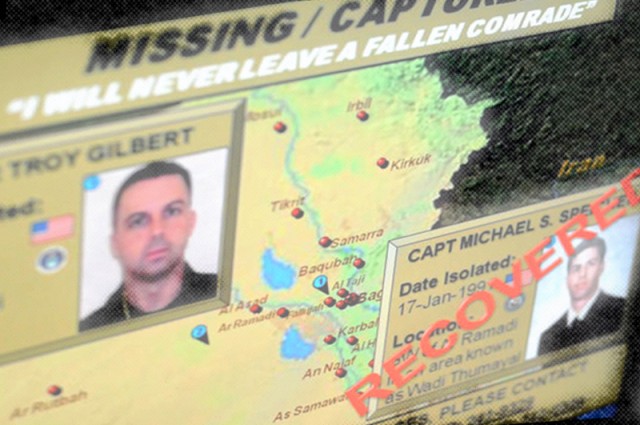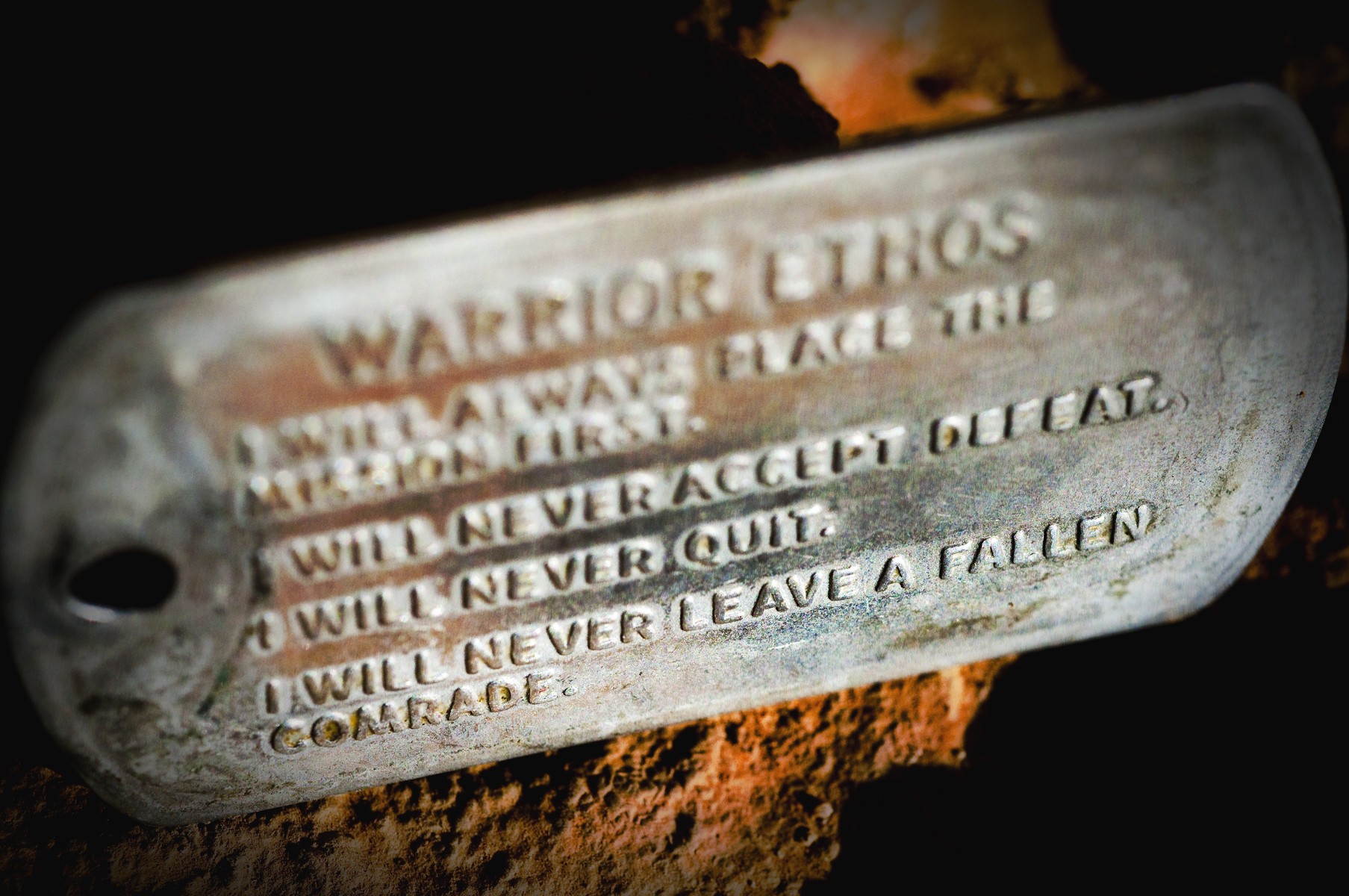CAMP VICTORY, BAGHDAD -- "We never have, and we never will stop looking," said Navy Lt. Cmdr. K.C. Chhipwadia, the senior intelligence ofA,A!ficer with United States Forces - Iraq's Personnel Recovery Division.
This is the motivation behind OperaA,A!tion Liberator II, the latest operation in the U.S. military's ongoing efforts to find and recover the 16 American and coalition service members and civilians missing in Iraq.
Operation Liberator II began April 15 and continues the work started last summer during Operation Liberator, a two-month-long effort that improved the collection of actionable intelligence relating to missing personnel, said Lt. Col. Kevin Dennehy, director of USF-I's Personnel Recovery Division. That operation laid the groundwork for the development of this phase of the search.
"We feel we can build on it with adA,A!ditional intelligence and cooperation and make Liberator II even more successful," Dennehy said.
Although USF-I is spearheading the operation, a wide spectrum of agencies are involved, Dennehy said, including U.S. Central Command and the U.S. Embassy's Office of Hostage Affairs, as well as the FBI, the Defense Intelligence Agency and the National Geospatial Agency.
Chhipwadia said the goal is to conduct Operation Liberator II in conjunction with the Government of Iraq, which is not yet directly involved. However, he expects the operation to be one of the main things that "boots-on-the-ground" Soldiers will discuss with their counterA,A!parts in the Iraqi Police and Iraqi Army as they spend time together in leadership meetings and during advise-and-assist missions.
Operation Liberator, which focused intelligence-gathering on the missing inA,A!dividuals, created a grassroots campaign that contributed to the recovery of Navy Capt. Scott Speicher in July 2009, DenA,A!nehy said. Speicher, a naval aviator whose jet was shot down on the first night of Operation Desert Storm in 1991, was the only American listed as missing in action from the first Gulf War.
Recently, the Personnel Recovery Division helped with the return of Issa Salomi, an American contractor captured by insurgents in January. He was held for two months and released March 25.
According to Chhipwadia, 11 of the16 individuals still missing in Iraq are American citizens, four are South Africans and one is British. Two of the Americans are members of the military who have been missA,A!ing since 2006. Air Force Maj. Troy Gilbert, disappeared after his F-16 crashed, and Army Reserve Staff Sgt. Ahmed Al-Taie, a linguist for the Baghdad Provincial Reconstruction Team, was kidnapped in Baghdad.
As U.S. forces prepare for the transition out of Iraq, Dennehy said it is important that the U.S. military fulfills its duty to bring all 16 home with dignity and honor.
"The mission to recover personnel will continue in some form or another, because we never stop looking for our people," he said. "Go back to World War One, World War Two, KoA,A!rea, or Vietnam. We still have people out there looking for our missing."
"You never leave a fallen comrade," Dennehy said. "Even though we are leavA,A!ing Iraq, we're not leaving our missing."




Social Sharing